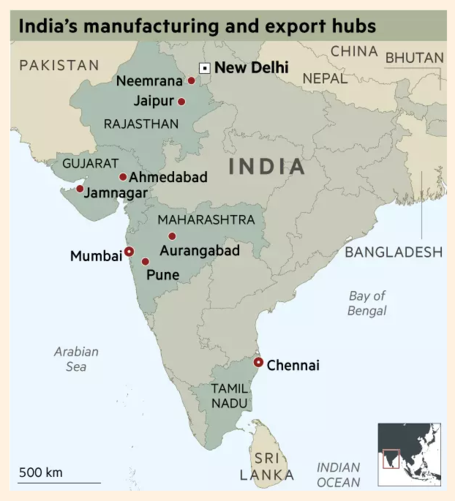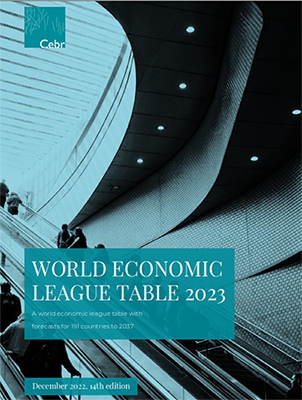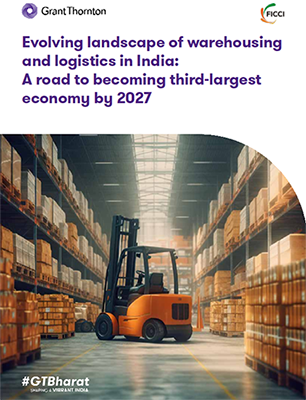Asian Century: Emphasis, India
The Asian Century is on the move, and it's being driven by demographics
“In the past, economic growth was driving demographics,
and now it’s the other way around.”–Hans Rosling
Decoding India's
Warehousing Story

India's Demand & Rise In Investments In Logistics & Warehousing
The Asian Century Is on the move
The Asian Century appears to be making a major shift south, moving counterclockwise, from East Asia to Western China and is now readying to take up residence in India.

The Asian Century has already witnessed the Dodge Plan and economic miracle of Japan in the 1950s, then moved west shaping the revitalization of Korea in the 1960s, then south to Deng Xiaoping’s opening of China in the late 1970s, and then on to China’s western provinces and mega-cities like Chongqing and Chengdu. The Asian Century: Emphasis, East Asia has now lasted for seventy years.
What’s driving it all is demographics: East Asia’s demographic decline vs. India’s demographic dividend.
Amazingly, robot-driven automation can be a lifesaver for both populations in severe decline (East Asia) as well as for those young and surging (India and Southeast Asia).
The necessary fertility rate to keep things in equilibrium is 2.1 children per woman. The fertility rate is 1.1 children in Korea and 1.4 in Japan. The prospects in both cases are alarming. Japan’s population, which today stands at almost 126 million, will drop to 104 million in 2050 and a mere 72 million in 2100. The figures in Korea’s case, now with 52 million people, are 46 million by 2050 and 24 million in 2100. In both cases, there is little scope for even drastic action by the government through monetary incentives and social pressure to reverse this trend.
Currently India’s fertility rate of 2.1 children per woman. By 2050, India’s population will rise to 1.7 billion and thereafter stabilize at 1.5 billion in 2100. India’s population pyramid by age continues to be healthy, with only 6 percent, or 85 million Indians, 65 or older.
Hans Rosling, MD, PhD, was (1948-2017) an academic, public speaker, and developer of Trendalyzer software system, wrote: “Why do I as a professor from public health speaking about health and demography get invited to Goldman Sachs [and] all these big banks around the world? Because I tell them I can see on my screen when economic growth comes before you can see it. In the past, economic growth was driving demographics, and now it’s the other way around.”
Demographic decline vs. demographic dividend
How does automation fit into this equation? Well, for East Asia’s declining population, robot-driven automation will be necessary to replace lost workers and to serve social needs of a rapidly aging populace.
In India, robot-driven automation will be necessary to service burgeoning masses of consumers.
Key element to India’s near-term and long-term growth and success is logistics.
Conversations with key stakeholders reveal that after two decades where highways were the most dominant infrastructure sector, the next decade is expected to see an unprecedented investment boom in warehouses.
According to the Indian Brand Equity Foundation (IBEF), the Indian warehousing market is set to grow at a compound annual growth rate of 15.64 percent to reach $34.99 billion by 2027. Against this backdrop, India is looking at a transforming warehousing map in the decade ahead.
The PM Gati Shakti master plan, which aims to strengthen multimodal connectivity, reduce timelines, and improve last-mile delivery, could prove a game-changer for the warehousing industry — opening up new launch sites and attracting higher investments for modernization and automation.
Satish Shukla, co-founder of Addverb Technologies, remembered early on working to help India realize its dream of logistics success.
“We worked with many e-commerce and retail companies while they were expanding across the country.
“It was imperative that they automate their fulfillment centers to meet the increased customer expectations of on-time delivery and to handle a higher number of SKUs.
“We also observed that the rise in disposable income and digitization had given the much-needed push to consumer demand, and businesses wanted to scale really fast to meet this surging demand.
“Many of our automation solutions were designed and deployed to help industries scale their supply chain to be able to cater to this demand.
“In the past seven years, we have not only worked with big conglomerates and Fortune 500 companies but also extensively worked with regional companies looking to scale, busting the myth that automation isn’t a good fit for small enterprises.
We at Addverb have just started, and have a long way ahead, and have infinite possibilities to explore, as India is positioned to become a manufacturing hub.
“In this backdrop, it gives me immense pride to see the government supporting the industry with the Robotics Gallery in the Gujarat Science City, and finally realizing the potential of India towards becoming the Robotic Factory of the World.”
See also:
Indian Logistics Catches a Huge Break
Benefits of recent Goods and Services Tax (GST) already making sourcing, distribution, and warehousing easier, faster—and cheaper!





